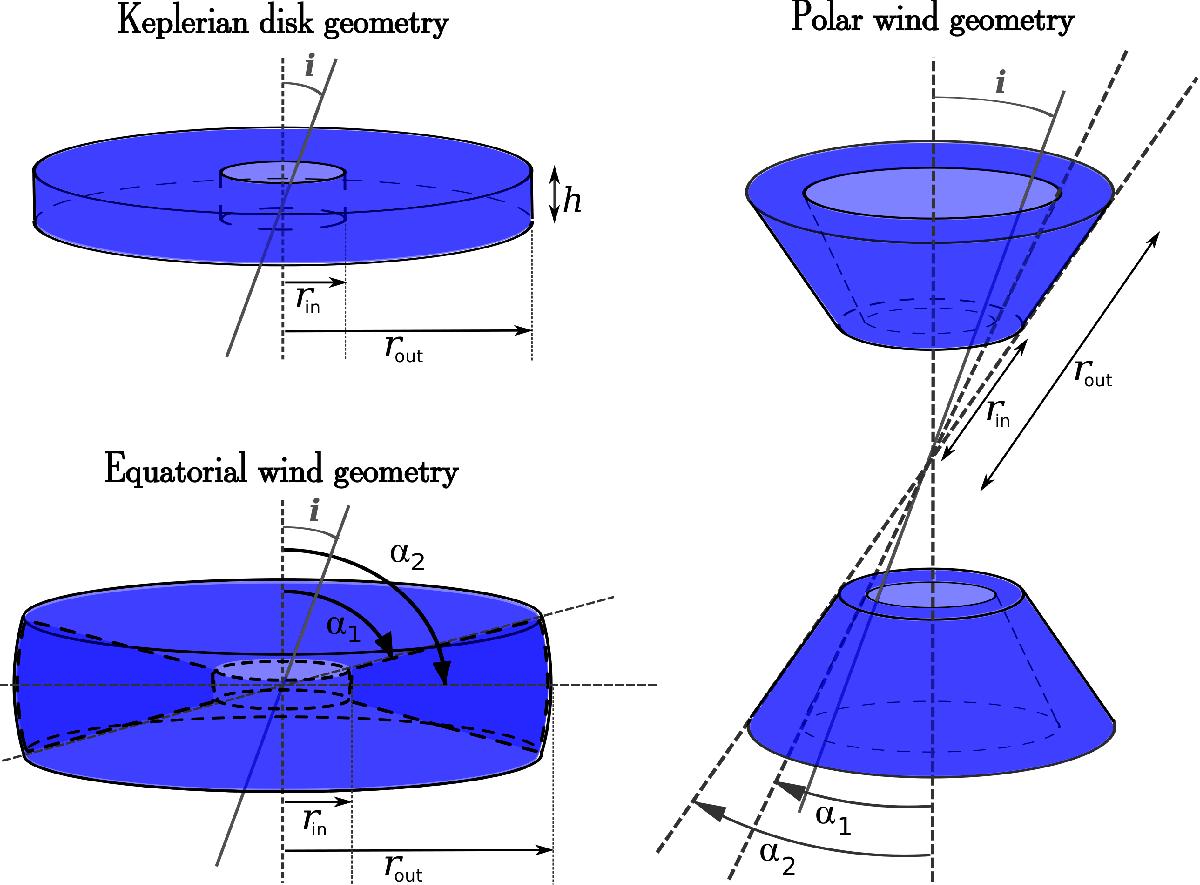Fig. 1

Geometry of the BLR models investigated. STOKES allows us to parameterize cylindrical and conical emission regions. The thin Keplerian disk geometry is obtained by taking a height that is much smaller than the outer radius rout (upper left). The polar wind geometry is a thin hollow bicone with an opening angle going from α1 = 45° to α2 = 60° (right). The equatorial wind geometry is built using the same conical geometry as for the polar wind but with α1 = 75° and α2 = 90°, resulting in a flared disk with an opening angle of 30° (lower left).
Current usage metrics show cumulative count of Article Views (full-text article views including HTML views, PDF and ePub downloads, according to the available data) and Abstracts Views on Vision4Press platform.
Data correspond to usage on the plateform after 2015. The current usage metrics is available 48-96 hours after online publication and is updated daily on week days.
Initial download of the metrics may take a while.


